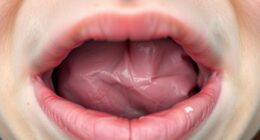Tooth Fairy horror stories often begin with innocent expectations that spiral into chaos. Imagine waking up to find the Tooth Fairy forgot your lost tooth, leaving you devastated and questioning the magic. Or perhaps a sibling plays a prank, transforming a light-hearted tradition into a chilling event. These tales reveal childhood fears and how fairy tales can twist into nightmares. The darker side of the Tooth Fairy reflects societal anxieties and childhood trauma, as misunderstood legends take on sinister forms. If you keep exploring, you'll uncover even more eerie transformations and chilling anecdotes from others who faced similar frightful situations.
Key Takeaways
- Children can experience intense disappointment when the Tooth Fairy forgets to leave a reward, leading to feelings of betrayal and sadness.
- Sibling interventions can humorously transform Tooth Fairy mishaps into memorable stories, fostering laughter and bonding within the family.
- Creative solutions, like leaving notes for the Tooth Fairy, can help mitigate disappointment and create opportunities for family connection and understanding.
- Misunderstandings around the Tooth Fairy's role can evoke childhood fears, turning her into a sinister figure linked to night terrors and anxiety.
Tooth Fairy Mishaps
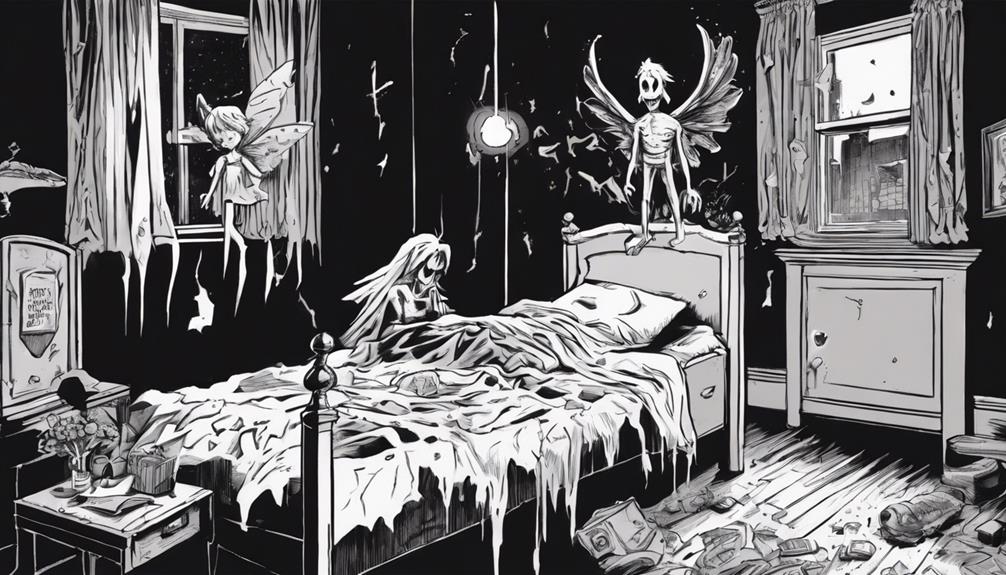
Tooth Fairy mishaps can turn a simple tooth exchange into a hilarious adventure, just like when Jack enthusiastically anticipated his reward but found the Tooth Fairy had forgotten him.
Imagine the disappointment as you lay in bed, dreaming of the cash you'd find under your pillow after losing your last tooth. You might even have told your younger brother about the magical rewards, only to be left empty-handed.
In Jack's case, the mix-up didn't go unnoticed. His younger brother, Ben, spotted the situation and quickly came to the rescue. He placed a $20 bill on Jack's dresser, along with a note from the Tooth Fairy thanking Jack for his patience. This clever fix not only salvaged Jack's excitement but also added a layer of humor to the situation.
Jack couldn't contain his joy and quickly penned a thank-you note, hoping for more money from the Tooth Fairy in the future.
Such mishaps capture the whimsical nature of childhood beliefs, where expectations meet reality in the funniest ways. After all, who doesn't love a good Tooth Fairy story, even if things don't always go as planned?
Nightmares From Childhood Fables
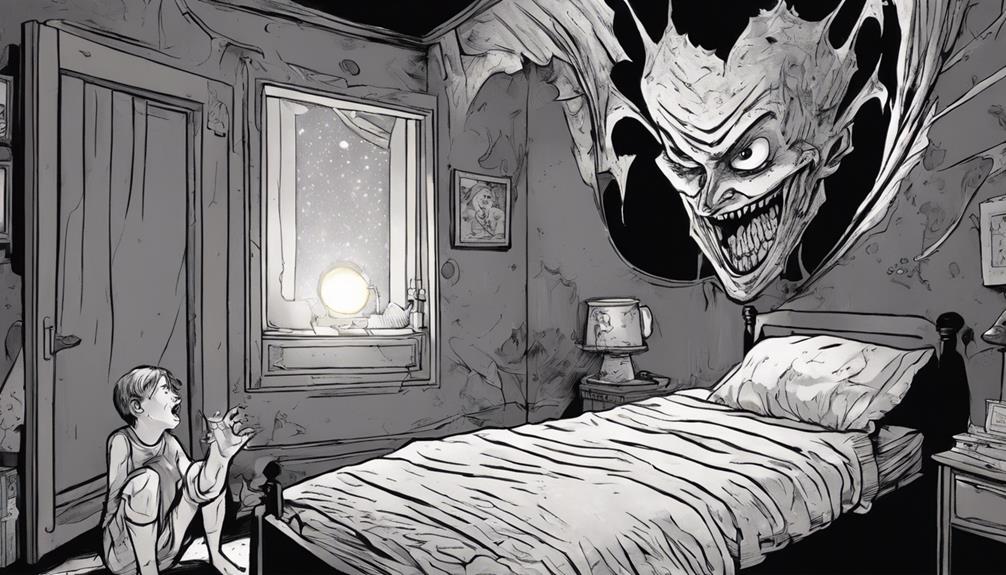
As a child, you might've found comfort in fairy tales, but sometimes those stories twist into nightmares.
The darker interpretations of these fables tap into your childhood fears, revealing how innocence can mask something sinister.
Let's explore how misunderstood fairy tales shape our fears and the chilling transformations of beloved characters.
Misunderstood Fairy Tales
Fairy tales often mask dark truths, with familiar characters like the Tooth Fairy transforming into haunting nightmares that linger in both childhood dreams and adult fears. You might remember the excitement of losing a tooth, leaving a note under your pillow, and enthusiastically anticipating what the Tooth Fairy would bring.
But what if this figure, once comforting, turned sinister? Misunderstood fairy tales often twist innocence into horror.
Consider Matilda Dixon from 'Darkness Falls.' Once a beloved figure, she became a malevolent entity due to false accusations. This transformation illustrates how societal fears can morph childhood myths into nightmares.
In folklore, fairies possess a dual nature; their kindness can vanish if provoked. Children may feel the Tooth Fairy would be watching, ready to punish those who misbehave or don't adhere to the rules.
As adults, these tales resurface, reminding you of the blurry line between comfort and fear. What was once a whimsical exchange now evokes dread, highlighting how misunderstood fairy tales can haunt us long after childhood.
In this shifting landscape, the Tooth Fairy becomes less an ally and more an unsettling reminder of the darkness lurking within familiar narratives.
Childhood Fears Explored
Childhood nightmares often stem from innocent fables that twist into terrifying visions, leaving a lasting imprint on your psyche. You might remember hearing about tooth fairies, a concept that seems really fun at first. However, probe deeper, and you might uncover a darker side lurking in the shadows. The idea of a small creature sneaking into your room while you sleep, quietly taking your lost teeth, can quickly morph into something sinister in the mind of a child.
What if the tooth fairy doesn't just take teeth but leaves behind something far more unsettling? This fear resonates with many, as traditional folklore often portrays fairies as unpredictable beings, capable of malice if not properly appeased. You could find yourself lying awake, heart racing, convinced that the tooth fairy is more than just a whimsical figure.
As you navigate these childhood fears, it's clear that the innocent tales you once cherished can morph into nightmares, reflecting a deeper struggle with the unknown. What seems fun on the surface can reveal unsettling truths, making you question the very nature of those childhood fables.
Dark Interpretations of Innocence
Many beloved childhood fables contain hidden darkness, transforming innocent characters into sources of fear that can haunt you long after you've grown up. The character Matilda Dixon from "Darkness Falls" exemplifies this shift, turning the tooth fairy from a comforting figure into a menacing specter. Matilda's tragic backstory reveals how innocence can be corrupted, with her witch-like portrayal serving as a metaphor for unresolved childhood fears.
This narrative encapsulates a deeper exploration of childhood trauma and its lasting impact. It suggests that the nightmares you once brushed aside can resonate throughout your life, echoing real experiences of night terrors and sleep paralysis. As societal perceptions of the tooth fairy evolve, what was once a nurturing figure now symbolizes the lurking darkness beneath childhood innocence.
| Childhood Fable | Dark Interpretation |
|---|---|
| Tooth Fairy | Matilda Dixon's haunting |
| Little Red Riding Hood | The wolf as predator |
| Cinderella | The stepsisters' cruelty |
These interpretations reveal how fables can reflect deeper societal anxieties, transforming symbols of innocence into sources of horror.
Social Media Reactions
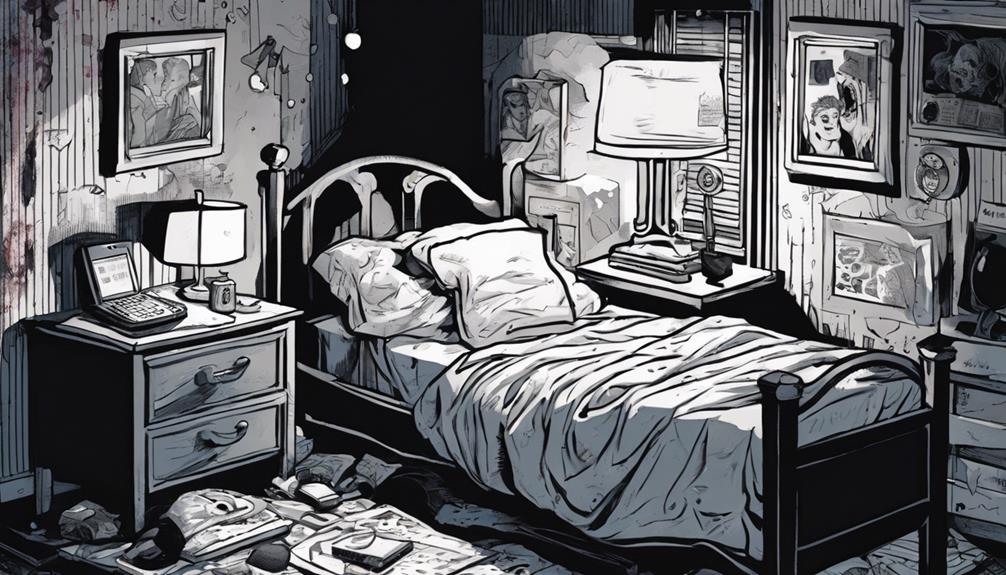
Social media has become a lively hub for sharing tooth fairy mishaps, where users trade their funny and relatable stories about the mythical figure's occasional forgetfulness.
Platforms like Facebook have turned into treasure troves of humorous anecdotes, with parents reminiscing about their own experiences. Posts about Jack's tooth mishap, for instance, where the Tooth Fairy forgot to leave money, sparked significant interaction as families chimed in with their own tales.
Here are three memorable social media reactions that illustrate the community's shared experiences:
- The Generous Sibling: One user recounted how Ben placed a $20 bill on Jack's dresser, only to find a thank-you note from the Tooth Fairy the next morning. This twist not only generated laughter but also a flood of similar stories from other parents.
- Forgotten Teeth: Many shared moments when the Tooth Fairy forgot entirely, leading to frantic late-night searches for coins or creative excuses.
- Creative Solutions: Some parents even recounted how they left elaborate notes explaining the Tooth Fairy's delays, fostering a sense of connection and lightheartedness among followers.
Family Activities Gone Awry

Family activities often spark joy and laughter, but they can quickly turn chaotic, leaving everyone in stitches over unexpected mishaps. Envision this: Jack, enthusiastic to earn a little cash for the book fair, extracts his tooth, only to find the Tooth Fairy forgot to leave him anything. In a classic parental move, Ben swoops in with a $20 bill on Jack's dresser, saving the day but also raising a few eyebrows.
Sometimes, your family projects don't go as planned either. Whether it's Cooper's ambitious Tinker Toys chair that collapses under him or the tomato sauce-making session that turns into a splatter fest, these moments bring both chaos and humor.
Here's a glimpse of some common family activity mishaps:
| Activity | Mishap | Resolution |
|---|---|---|
| Tooth extraction | Tooth Fairy forgets to pay | Parent intervenes |
| Toy construction | Chair collapses | Laughter ensues |
| Sauce making | Sauce everywhere | Clean-up party |
| Fundraiser attendance | Unexpected challenges | Family bonding moment |
These experiences remind us that the best family memories often come from the most unexpected situations.
The Dark Side of Fairies
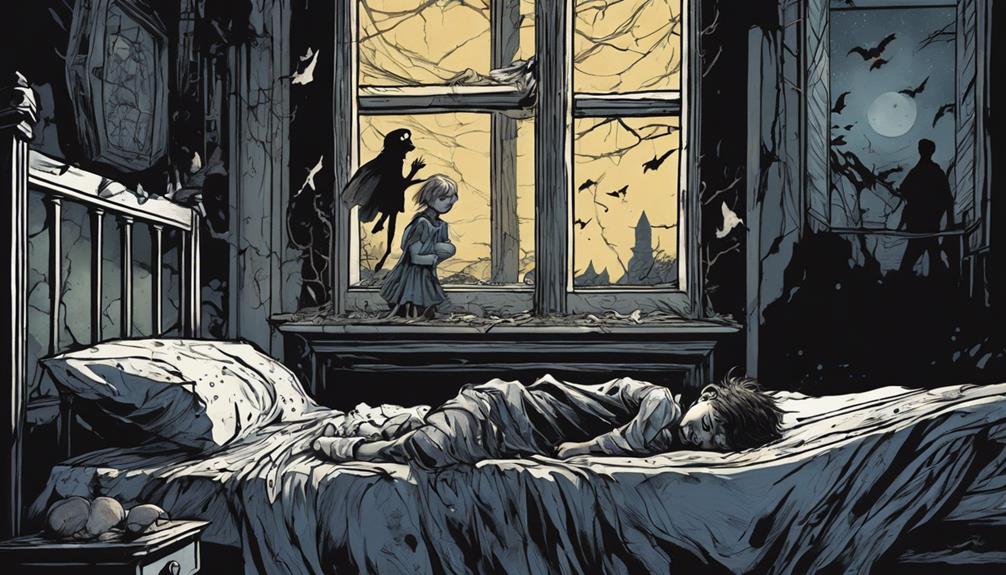
While the Tooth Fairy might seem like a harmless figure in childhood folklore, stories like that of Matilda Dixon reveal a much darker side to these seemingly innocent myths. In the film 'Darkness Falls', Matilda transforms from a beloved local figure into a menacing witch, reflecting deep-seated societal fears. This shift highlights how fairy tales can morph into horror narratives that terrify instead of soothe.
Here are three unsettling aspects of this dark transformation:
- Malicious Intent: Unlike the modern view of fairies as benevolent, Matilda embodies a malevolent spirit, showcasing the sinister potential of these mythical beings.
- Cultural Shift: The portrayal of fairies in contemporary media emphasizes their capacity to instill fear, moving away from the romanticized versions of the past.
- Trauma and Innocence: Matilda's story serves as a haunting reminder that childhood myths can harbor darker implications, where the innocence associated with figures like the Tooth Fairy is overshadowed by fear and trauma.
This chilling representation urges you to reconsider the folklore that surrounds your childhood, revealing that not all fairy tales end happily.
Psychological Impacts of Fear
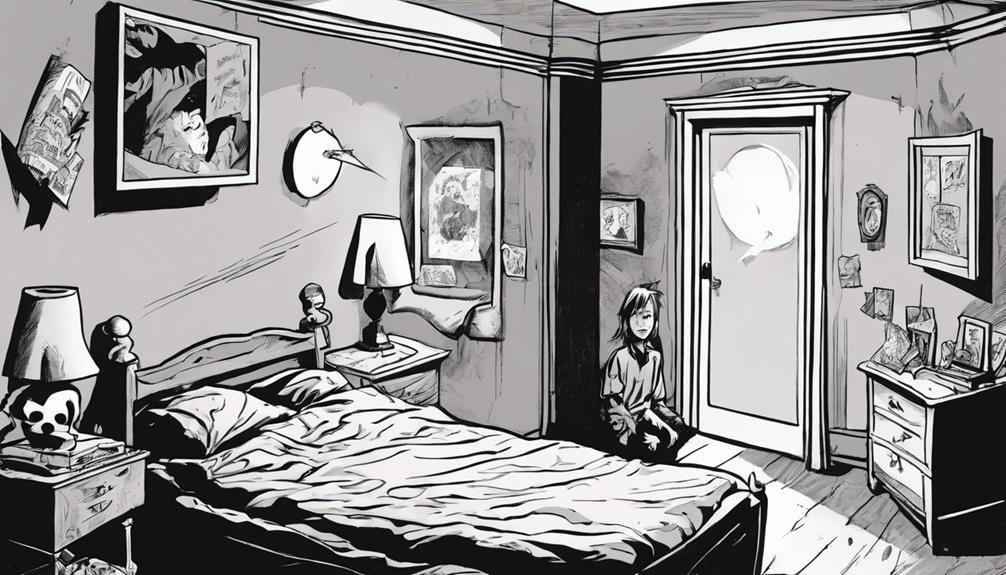
Many people don't realize how deeply childhood fears can shape psychological development, often leading to anxiety and other mental health issues later in life. When you experienced fear, whether from a menacing tooth fairy or the darkness itself, it didn't just vanish. Instead, it could manifest into more significant problems, such as night terrors or sleep disorders.
Take Matilda Dixon from 'Darkness Falls' as an example; her transformation into a frightening figure shows how cultural perceptions of fairies have shifted. What was once a benevolent character now evokes dread, potentially reinforcing your anxiety surrounding bedtime. Research indicates that if you don't address these fears, they can evolve into phobias that persist into adulthood.
The film highlights this relationship—unresolved childhood fears can lead to adult anxieties and recurring nightmares. When you're haunted by these fears, it creates a cycle of distress, illustrating the psychological concept of the 'curse' of fear. Exposure to traumatic experiences may keep you ensnared in a web of anxiety, affecting your mental well-being long after childhood ends.
Recognizing and confronting these fears is essential for breaking the cycle and fostering healthier psychological development.
Retelling the Horror Stories
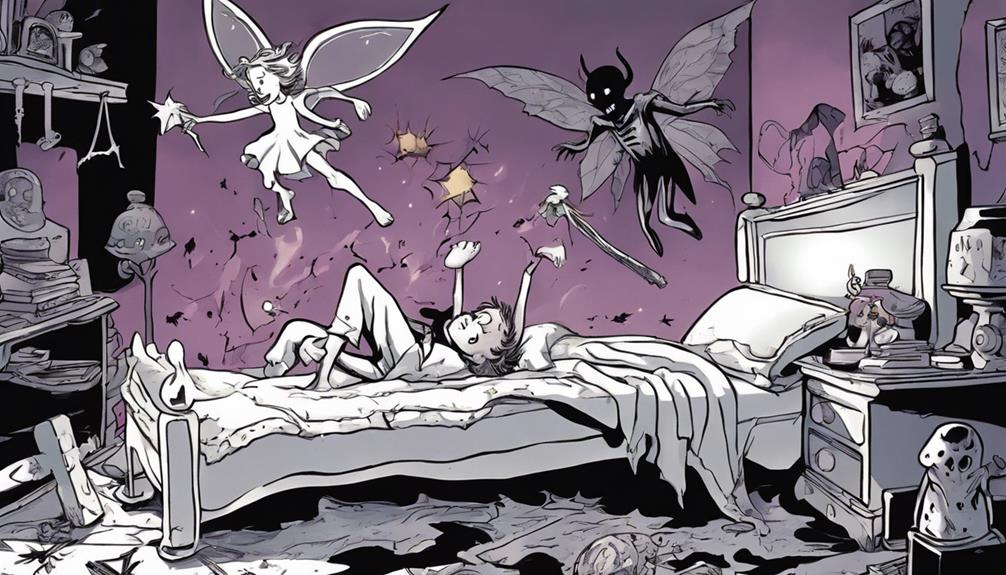
When you think about tooth fairy stories, it's easy to overlook the darker side lurking beneath the surface.
Tooth extractions gone wrong, misunderstood fairy legends, and the childhood fears they evoke can twist these once-innocent tales into something truly horrifying. In some stories, the tooth fairy becomes a sinister figure, extracting teeth with a cold, metal tool and causing pain and terror instead of leaving a small reward under the pillow. The misinterpretation of these legends has led to the perpetuation of the tooth fairy’s chilling tale in popular culture, instilling fear in children and causing them to dread losing their teeth. The innocent tradition of celebrating a child’s milestone of losing a tooth has been overshadowed by the darker portrayal of the tooth fairy, leaving many to wonder if there is more to the legend than meets the eye. For example, the tooth fairy’s chilling tale of extracting teeth from unsuspecting children in the dead of night has been passed down through generations, morphing from a whimsical bedtime story into a spine-chilling legend of a malevolent creature. The thought of a tiny winged being hovering over you while you sleep, waiting to pluck out your teeth, can send shivers down the spines of even the bravest individuals. These childhood fears and misconceptions can transform the tooth fairy from a beloved figure into a nightmarish symbol of terror.
Let's explore how these elements reshape our understanding of the tooth fairy myth.
Tooth Extraction Gone Wrong
Tooth extractions can quickly turn from a simple childhood rite into a nightmare, leaving kids—and parents—reeling from unexpected chaos.
Imagine your child, excited about the Tooth Fairy, only to wake up the next morning in tears, having found nothing under their pillow. You might try to salvage the situation, but sometimes, things just don't go as planned.
Here are three common scenarios that can turn a tooth extraction into a horror story:
- The Forgotten Tooth: You rush to help your child after their extraction, but in the chaos, you forget to place the tooth under the pillow. Instead, it ends up lost in the bottom of a toy box, leaving your child devastated.
- The Wrong Reward: In a moment of desperation, you slap down a crumpled dollar instead of the expected crisp bill. Your child's disappointment will sting more than any toothache!
- The Tooth Fairy Mix-Up: After a long night, you accidentally leave a note from the Tooth Fairy apologizing for being late—only to realize you misspelled her name. Now your child is questioning the very existence of magical beings!
These mishaps create unforgettable memories, but not always the kind you'd hope for.
Misunderstood Fairy Legends
The tales of tooth extractions gone wrong may seem harmless, but they echo deeper truths about the misunderstood legends of fairies, often revealing the shadowy side of these seemingly innocent figures.
Take Matilda Dixon from *Darkness Falls*, for example. Once a beloved local figure, she became a menacing spirit due to betrayal and societal misconceptions. This transformation highlights how traditional fairy legends often portray fairies as capricious beings with a darker side, contrasting sharply with the modern image of the tooth fairy as a benevolent gift-giver.
In folklore, fairies frequently embody themes of vengeance and malice, suggesting dire consequences for those who wrong them. Matilda's haunting serves as a chilling reminder of these roots.
The portrayal of the tooth fairy in contemporary culture diverges from historical interpretations, where the character was more closely linked to childhood fears and societal anxieties. Misinterpretations of these legends, like conflating the tooth fairy with Matilda's narrative, reflect broader cultural shifts in understanding folklore.
Childhood Fears Explored
Childhood fears often emerge from the shadows, where anxiety about losing teeth mingles with the uncertainty of what lurks in the dark, turning a once-beloved figure into a source of terror. You might remember the thrill of placing your tooth under the pillow, but then there's that nagging feeling, what if the tooth fairy isn't what she seems?
- Night Terrors: Many kids experience vivid nightmares linked to the fear of the tooth fairy, where she transforms from a kind collector to a sinister figure, much like Matilda Dixon from 'Darkness Falls'.
- Misunderstood Intentions: The duality of wanting a reward while fearing her presence creates a chaotic blend of curiosity and dread. You may wonder if she's truly there to help or if she harbors darker intentions.
- Cultural Narratives: Folklore often depicts fairies as unpredictable beings. This cultural backdrop can amplify your fears, making the tooth fairy feel less like a friend and more like a threat lurking in the shadows.
As you navigate these fears, remember it's natural to feel anxious about the unknown, especially when it involves something as personal as your lost teeth.
Lessons From Tooth Fairy Tales

While exploring the whimsical world of tooth fairy tales, you discover valuable lessons in patience, creativity, and the importance of connection.
Take Jack's experience, for example. When he extracted his tooth hoping for a big payout for a book fair, he instead faced disappointment when the Tooth Fairy forgot to visit. This mishap taught him patience, as he later expressed gratitude with a thank-you note, hoping for better luck next time.
Parents can turn these mishaps into creative moments, just like Ben did when he placed a $20 bill on Jack's dresser with a heartfelt note. This act not only remedied the situation but also strengthened their bond.
Engaging with the Tooth Fairy concept invites laughter and connection, as families share their own tooth fairy tales on social media.
Ultimately, these stories reflect deeper themes of childhood innocence and the magic of growing up. They remind you that even in disappointment, there are lessons to learn about patience, gratitude, and creativity.
The tooth fairy may not always deliver as expected, but the memories and connections made along the way are truly priceless.
Frequently Asked Questions
What Is the Dark Story Behind the Tooth Fairy?
The dark story behind the tooth fairy originates from folklore, where fairies were often mischievous or vengeful. Instead of rewards, they could bring fear, reflecting childhood anxieties and the consequences of misplaced trust in myth.
At What Age Should a Child Stop Believing in the Tooth Fairy?
When the rubber meets the road, most kids stop believing in the Tooth Fairy around age 10. Factors like parental encouragement, peer conversations, and older siblings all play a role in this shift.
What Is the Tooth Fairy Superstition?
The Tooth Fairy superstition involves placing a lost tooth under your pillow, hoping for a visit. In return, the Tooth Fairy leaves a small gift or money, making the experience of losing teeth feel magical.
What Does the Tooth Fairy Do With Bad Teeth?
Like a gardener pruning weeds, the Tooth Fairy might toss away bad teeth, valuing the healthy ones instead. She could transform those neglected teeth into something magical, reminding you to care for your smile.
What Are Some Ways to Prevent Tooth Fairy Horror Stories from Happening?
Parents can prevent the tooth fairy stories from turning into horror tales by communicating with their kids about expectations. They should also have a backup plan in case the tooth fairy forgets to visit. Keeping the tradition light-hearted and fun can ensure the tooth fairy stories remain a positive childhood memory.
Conclusion
In the delicate balance between childhood wonder and nightmarish tales, the Tooth Fairy transforms from a sweet giver of gifts to a harbinger of fear.
You recall the excitement of losing a tooth, only to be haunted by the chilling thought of what lurked in the shadows. These stories remind you that innocence can quickly give way to dread.
Embracing the lighthearted spirit of the Tooth Fairy means acknowledging the darkness, where nightmares often hide, waiting for their moment to emerge.






